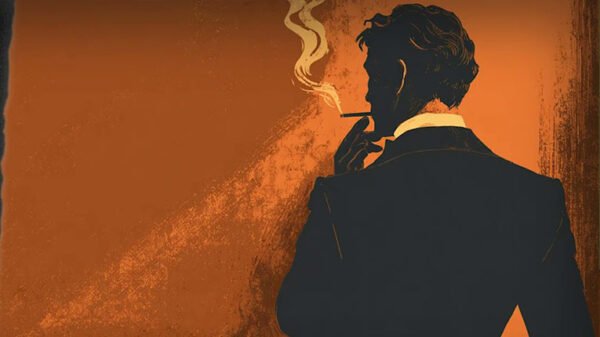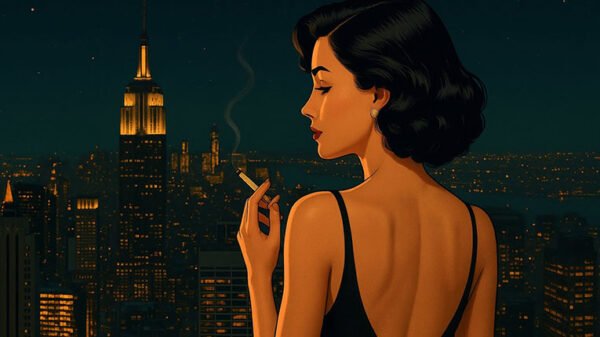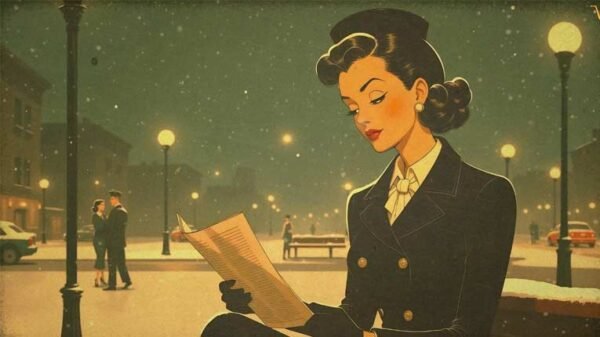It started like any other lazy evening. I was at a bar, half-distracted, scrolling through YouTube on my phone, looking for some mellow background jazz to go with my drink.
So I typed “jazz for studying,” hit play on one of the top results, and let the music take over. Within seconds, I was hooked.
The song was slow, smoky, and impossibly smooth, even as a husky female voice hummed her heart out with the emotion of a heartbroken lover. It sounded real. Like something you’d hear in a tiny New York bar.
For a while, I just listened, half in thought, half in awe. Whoever this artist was, she had it.
That inexplicable thing jazz singers have: emotion wrapped in restraint. And then I caught myself thinking, I should find more of her songs. And that’s where it got weird.
The Search for a Ghost

I opened YouTube, expecting to see a familiar artist name or maybe a record label.
But the channel name was something I didn’t recognise: Jazz Cloudy. I’d never heard of them, but the thumbnail was striking.
A mysterious woman with red lipstick, cigarette smoke curling in the dark, staring straight into the camera. Neo-noir perfection.
I clicked into the channel, and what do I see? Every video had a similar vibe, cinematic thumbnails, women in shadows, always that noir allure.
There were other channels like it, too, with names like Noirelia and Nostalgic Jazz. It felt like I’d stumbled into some underground network of digital jazz bars.
But when I tried to find the artist behind that voice, nothing. No credits in the description, no album links, no social media tags. I even googled a line from the lyrics that had stuck in my head: “you left your shadow on my skin.”
No results. Not a single one. That’s when the realisation hit me. This wasn’t an undiscovered artist. This was AI music.
The Realisation That Changed the Tune

I stared at the screen, suddenly hearing the song differently.
The saxophone didn’t breathe anymore; it looped.
The piano was too precise.
The vocals were just far too perfect. It was all… synthetic.
Beautifully, heartbreakingly synthetic.
And the deeper I went, the stranger it got. Every channel I clicked on had endless hours of music.
Full albums’ worth of jazz, ambient, or soulful tunes, all with the same warm, “live” sound.
None of it was real.
No studio, no singer, no late-night jam sessions; just code. Still, I couldn’t stop listening.
The Aesthetic That Sells the Dream
These AI jazz channels have nailed the art of presentation.
Their thumbnails look like they belong on vintage film posters.
They’re replete with dim lights, cigarette smoke, and women lost in thought. It’s a vibe halfway between Roman Polanski’s Chinatown and Edward Hopper’s Nighthawks.
Unlike the pastel anime art of lo-fi hip-hop streams, these visuals are cinematic and seductive.
They whisper mystery before you even hit play. And the music matches it perfectly; it’s all mood, melancholy, and late-night introspection.
It’s easy to believe there’s a real musician behind it, someone pouring their heart into a microphone.
That illusion is part of the magic. Or maybe part of the trick.
The Numbers Don’t Lie

Once I realised what I was listening to, I got curious.
Wow, this AI jazz scene? Turns out, it’s massive.
Channels like Pause, maybe? rake in around 7.3 lakh views every week, adding 400 to 700 new subscribers daily. Jazz Cloudy averages about 2.5 lakh weekly views.
For hour-long videos of what’s essentially background music, that’s staggering.
People are studying, working, relaxing, and falling asleep to jazz that’s never been played by a single human hand.
And the scary part? Most of them probably have no idea.
Do Machines Feel?
Here’s the thing. I didn’t feel betrayed. I felt confused.
Because the music was still good, and it still made me feel something.
The chords still hit. The melodies still lingered. But then my mind wouldn’t stop asking: if an algorithm can now feel like this, or at least fake feeling like this, what happens to the real thing?
Jazz was always about imperfection.
It’s the art of four musicians sharing a conversation in real time.
A laugh, a mistake, a spontaneous solo.
t’s the sound of humanity itself.
And yet here was AI, recreating it so convincingly that I couldn’t tell the difference.
Maybe that’s progress. Maybe it’s a loss. I can’t tell anymore.
Smooth, Synthetic, and a Little Bit Sad

Since that night, I’ve gone back to those AI jazz channels more than once. I can’t help it. They’re comforting, predictable, beautifully made.
They sound like peace. But I also make it a point now to listen to real jazz regularly.
Because as good as AI jazz is, it doesn’t breathe. It doesn’t stumble. It doesn’t surprise you with a solo that wasn’t planned.
When I first found that song, I thought I’d discovered a new artist I could fall in love with.
Instead, I discovered a mirror; one that reflected not just what jazz sounds like, but what we, as listeners, are becoming.
Maybe the machines can swing.
But they still don’t feel the blues.


